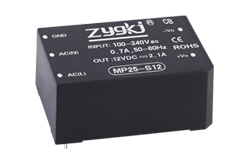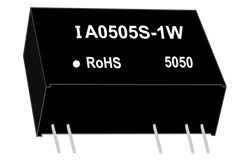소식
Understanding the Basics of AC-DC Power Supply: A Comprehensive Guide
저자: ZYG 전원 모듈 Time: 2023-7-27
소개
In today’s technological era, power supplies play a crucial role in various electronic devices and systems. In particular, the AC-DC power supply is an essential component that converts alternating current (AC) into direct current (DC) to provide a stable and regulated power source. This article aims to provide a comprehensive understanding of AC-DC power supplies, explaining their basic principles, components, and functionality.
1. The Basics of AC and DC Power
To comprehend the functionality of an AC-DC power supply, it is essential to understand the difference between AC and DC power. Alternating current (AC) is the type of electricity that flows in both directions periodically. It is the power supplied by the utility grid and is characterized by a sinusoidal waveform. On the other hand, direct current (DC) is the type of electricity that flows continuously in one direction. Batteries and electronic devices typically require DC power for their operation.
2. How AC-DC Power Supplies Work
An AC-DC power supply consists of several key components that work together to convert AC power to DC power. The primary components include a transformer, rectifier, filter, and regulator. Let’s explore each of these components in detail:
2.1 Transformer: The transformer is the initial component in an AC-DC power supply. It allows for the adjustment of the input voltage level to a desired output voltage level. Transformers work based on the principle of magnetic induction, where a changing magnetic field induces a voltage in a nearby coil.
2.2 Rectifier: After the transformer, the AC power is fed into a rectifier, which converts the AC voltage into pulsating DC voltage. A rectifier can be either a half-wave or a full-wave rectifier. A half-wave rectifier allows the current to flow in only one direction, resulting in a pulsating DC output, while a full-wave rectifier allows for a smoother DC output.
2.3 Filter: The rectified output from the rectifier still contains ripples and fluctuations. To remove these undesired variations, a filter circuit is employed. A filter consists of capacitors and inductors that smooth out the pulsating DC voltage, resulting in a more stable DC output.
2.4 Regulator: The filtered DC output is then regulated to provide a constant and precise voltage level required by the electronic device. Voltage regulators ensure that the output voltage does not fluctuate with changes in input voltage or load conditions. There are two types of voltage regulators: linear regulators, which dissipate excess power as heat, and switching regulators, which regulate the output voltage through fast switching and minimizing energy loss.
3. Types of AC-DC Power Supplies
There are various types of AC-DC power supplies available, each designed for specific applications. The most common types include:
3.1 Linear Power Supplies: Linear power supplies make use of linear regulators to regulate the output voltage. They are simple, low-cost, and ideal for applications where noise and ripple are not critical factors. However, they are less efficient due to the power dissipation in the linear regulator.
3.2 Switching Power Supplies: Switching power supplies, also known as SMPS (Switched-Mode Power Supplies), are widely used in modern electronic devices. They employ switching regulators to regulate the output voltage, resulting in high efficiency and compact size. Switching power supplies can handle a wide range of input voltages and provide stable outputs even with varying loads.

결론
AC-DC power supplies are the backbone of electronic devices, ensuring a stable and regulated power source. By understanding the basic principles, components, and functionality of AC-DC power supplies, users can make informed decisions when selecting and using them in their applications. Whether it’s a linear power supply or a switching power supply, having a solid understanding of these devices will prove valuable in designing and maintaining electronic systems.
이전의: Does the SP Series AC DC Converter unleash the power?
다음: Introducing the DC DC Converter EX Series: Powering Your Electronics Efficiently
관련 정보
-
2023-6-15
Revolutionizing Power Management with Bi-Directional Converters
In recent years, the demand for more efficient and reliable power management systems has grown significantly. One solution to this problem is the use of bi-directional converters. These converters have the ability to transfer power in both directions between two different DC power sources, making them ideal for a wide range of applications. Bi-directional converters are particularly useful in renewable energy systems, where the energy generated from sources like solar or wind power can be stored and used when needed. By using bi-directional converters, excess energy can be stored in batteries or fed back into the grid, providing a more efficient and sustainable energy solution. One major advantage of bi-directional converters is their ability to minimize power loss. Traditionally, power...
세부 정보보기 -
2023-7-1
Bidirectional DC-DC Converter: Efficient Power Conversion in Both Directions
Introduction In recent years, there has been a significant increase in the demand for bidirectional power conversion systems. These systems allow power to flow in both directions, enabling efficient energy transfer between different sources and loads. One crucial component of such systems is the bidirectional DC-DC converter. This article will delve into the working principle and advantages of the bidirectional DC-DC converter, highlighting its role in achieving efficient power conversion. Working Principle A bidirectional DC-DC converter is a power electronic device that converts direct current from one voltage level to another, while also allowing power flow in both directions. It consists of two main parts: an input stage and an output stage. The input stage typically consists of an active...
세부 정보보기 -
2023-9-24
Introducing the Versatile Modular 750W Power Supply: The Perfect Solution for Your Power Needs
Ihere technology plays a crucial role in our daily lives, having a reliable and efficient power supply is of utmost importance. Whether you are a casual computer user, a hardcore gamer, or a professional in need of a high-performance system, the Versatile Modular 750W Power Supply is the perfect solution for all your power needs. With its cutting-edge technology and sleek design, this power supply offers unparalleled performance and versatility. Let's delve deeper into the features and benefits that make it a must-have for anyone seeking a reliable power source. First and foremost, the 750W power output ensures that your system is supplied with sufficient power to handle even the most demanding tasks. Whether you are indulging in intense gaming...
세부 정보보기 -
2023-8-5
HP Series: Unleashing the Power of AC DC Converters
Introduction: In today's tech-savvy world, the demand for efficient and reliable power supply solutions is continuously increasing. AC DC converters play a crucial role in transforming alternating current (AC) into direct current (DC) to power various electronic devices and equipment. Among the leading brands in this domain is HP, with its HP Series AC DC converters. This article will delve into the features and advantages of these converters, highlighting their significance in different sectors. 1. Efficient Power Conversion: The HP Series AC DC converters are known for their high efficiency in power conversion. With cutting-edge technology and advanced design, these converters minimize power losses and maximize energy efficiency. This ensures that the converted DC power is delivered to the load...
세부 정보보기 -
2023-4-14
An AC-DC converter, also known as a rectifier, is a device used to convert alternating current (AC) to direct current (DC). This is an important process as many electronic devices require DC power to operate. In this article, we will discuss the working principle, types, and applications of AC-DC converters. Working Principle: The working principle of an AC-DC converter is based on the fact that diodes conduct current in only one direction. A diode is a semiconductor device that allows current to flow in one direction but blocks it in the opposite direction. The basic AC-DC converter circuit consists of four diodes connected in a bridge configuration called a full-wave rectifier. When an AC voltage is applied to the input...
세부 정보보기 -
2023-4-12
How to Build an AC-DC Converter
An AC-DC converter, also known as a rectifier, is an electrical device that converts alternating current (AC) power to direct current (DC) power. This conversion process is essential for many electronic devices, as they require DC power to function properly. In this article, we will discuss the basic principles of building an AC-DC converter. The first step in building an AC-DC converter is to choose the right components. The most important components of an AC-DC converter are a transformer, a diode bridge, and a filter capacitor. The transformer is used to step down the AC voltage to a lower voltage that can be rectified. The diode bridge is used to rectify the AC voltage, which means that it converts the...
세부 정보보기


















